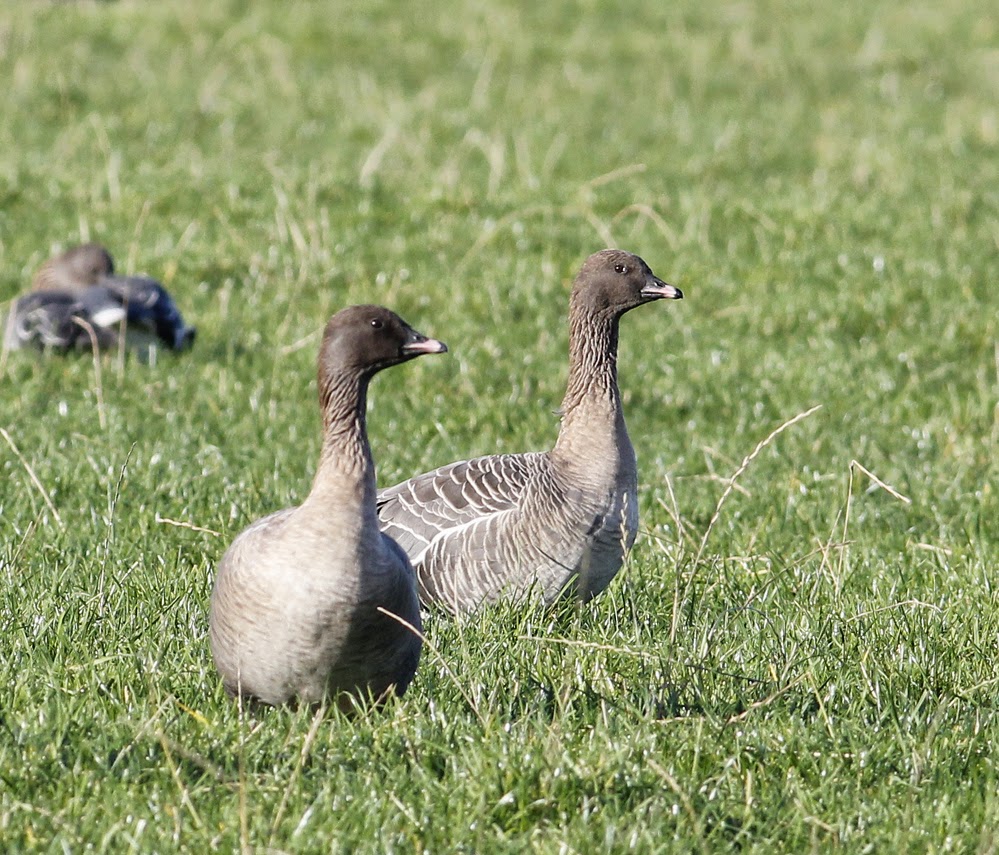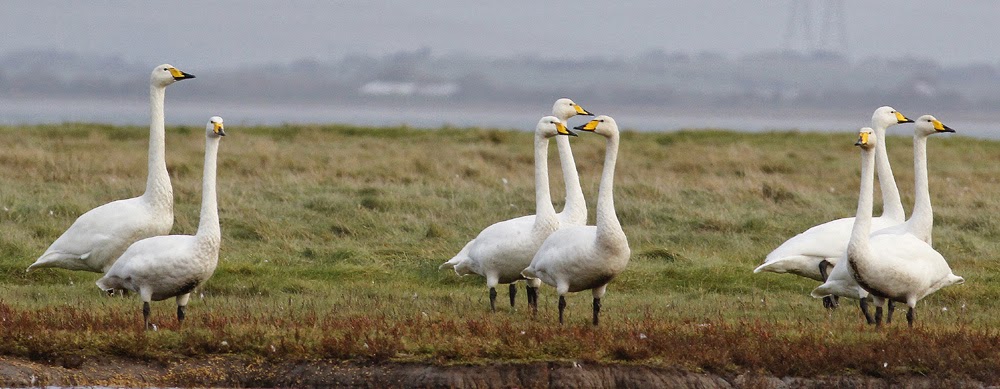It was a pretty awful week of weather but maybe a good one to be laid low by a common cold. So apologies for a lack of posts blog readers but we’re back on track now.
By Sunday morning I was bursting to go birding so set off in the usual direction north. I passed a couple of roadside Kestrels at Head Dyke Lane and Damside, two locations where the birds remain on their year round territories. It was far too dark to stop for a picture and anyway these adult birds are too wary to hang about for slowing vehicles. So I pulled into Braides Farm a mile up the road where there was yet another Kestrel and also a hunting Barn Owl. The light was really poor and I think the pictures below were shot on Auto ISO at 3200, hence the grainy finish
Barn Owl
Barn Owl
Barn Owl
The owl wasn’t having much luck hunting the long, wet grass and disappeared out of sight further along the main road. I’d stopped hoping to see the Buzzards and found one of them on a fence post a long way towards the sea wall. There was a Raven too, a couple of Little Egrets, a number of Curlews hidden in the longish grass and 15+ Meadow Pipits harassing the hovering Kestrel.
At Conder Green I checked the pool, the creeks and “around the bend” - past the Stork and into the car park. Duckers and divers were represented by 105 Teal, 14 Little Grebe, 13 Wigeon, 4 Goldeneye, 2 Goosander, 1 Red-breasted Merganser and 2 Little Egret.
As of November 23rd is it now autumn or winter? The 1 Common Sandpiper and 1 Spotted Redshank still present might suggest it is autumn so therefore interesting to see if both essentially migrant species overwinter here as they have in past years. Little Brown Jobs - 2 Meadow Pipits, 25+ Chaffinch and 2 Pied Wagtail.
A peek at Glasson Dock revealed 55 Tufted Duck, 5 Goldeneye and 1 Little Grebe. There was a yacht circuiting the basin which caused a flurry of activity from the Goldeneye causing the 4 males and 1 female to fly out the safety of the estuary. It is wonderful to see this superb duck back for the winter months ahead.
Goldeneye
The light improved slowly so I gave Pilling a shot, stopping to scan through Pink-footed Geese along the busy thoroughfare that is the modern Backsands Lane. My rough and ready count was 2500 but with so many noisy and colourful passers-by I reckoned the geese would not be there long before they sought quieter parts.
Pink-footed Geese
Pink-footed Geese
Along the sea wall and the wet fields at Fluke Hall - 55 Whooper Swan, 11 Little Egret, 45+Redshank, 15 Oystercatcher, 9 Curlew, 45 Woodpigeon, 4 Stock Dove and 120 Lapwing.
With Andy busy at a bird ringing demonstration at the Wildfowl Trust it was my turn to fill the feeders at the ringing station near Oakenclough. It’s been a surprise how many Goldfinch and Greenfinch there are up here in the hills, especially since Goldfinch are supposed to leave us for the winter months.
There was a continuous flurry of 15-20 Goldfinches activity around the feeders with smaller numbers of Greenfinch, Chaffinch and the ever present Coal Tits. Two Fieldfare fed on the hawthorn berries adjacent to our net rides, so all looks good for a sunny, calm day and a spot of mid-week ringing.
Goldfinch
Fieldfare
Join Another Bird Blog soon for more busy birding.
Linking today to Run-A-Round Ranch and Stewart's World Bird Wednesday.
Linking today to Run-A-Round Ranch and Stewart's World Bird Wednesday.



































































.jpg)














